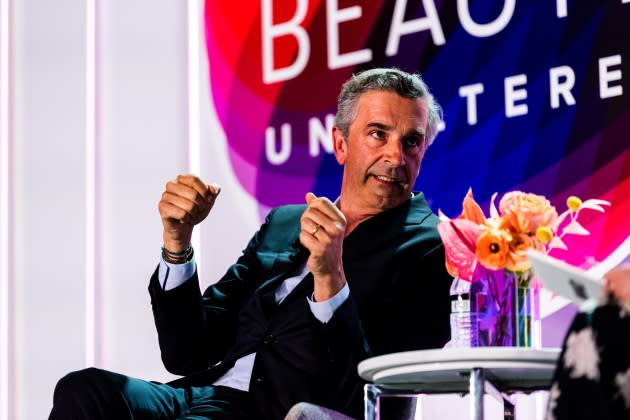Puig’s José Manuel Albesa on Challenging the Status Quo
- Oops!Something went wrong.Please try again later.

Despite being one of the leading beauty and fashion companies in the world, Puig has maintained the agility and nimbleness of a much smaller business.
Being a family-owned company is “at the center of everything we do,” said José Manuel Albesa, Puig’s president of beauty and fashion. “We honor our values.”
More from WWD
The Spanish company was founded in 1914. What has maintained throughout the years is a dedication to the core brand ethos, which is focused on supporting the creatives who are leading the company’s brands.
“We provide an ecosystem for them,” said Albesa of his portfolio, which includes designer brands like Jean Paul Gaultier, Paco Rabanne, Carolina Herrera and, most recently, Dries Van Noten, as well as niche brands like L’Artisan Parfumeur.
Puig looks to empower and support each to allow for disruption, creativity and innovation, he added, from formulation to packaging. That includes bucking conventional wisdom when needed, or, as Albesa says, “making don’t into do’s.”
For example, historically, China has been a very small market for fragrance, one driven more by the prestige of the brand than any olfactive qualities. For Puig, though, it has been a key source of growth.
“We are learning a lot,” Albesa said. “I say to the teams, ‘Imagine a Chinese person was creating a fragrance for us and put a bullfighter, because we are Spanish, with paella and flamenco on the bottle.’ No. And you do see all these brands marketing in China putting red or a tiger [on packaging]. It’s not that. You have to go deeper, and to go deeper, you have to understand the culture.”
One learning, he said, came from discovering that L’Artisan Parfumeur’s Passage d’Enfer was particularly popular with the Chinese consumer.
“All of a sudden, in our boutiques in Europe, we had a lot of Chinese people buying it…this fragrance became 60 percent of our sales,” said Albesa. “We saw that the juice was really appealing to them.”
Puig has also emphasized the importance of creativity and design, in all aspects of a fragrance’s creation.
“We are storytellers, and the packaging plays an important role in the story you want to tell,” Albesa said. “You cannot tell a story in a square bottle with a plastic cap.”
He referenced Paco Rabanne’s 1 Million bottle, which resembles a gold bar. The scent launched during the financial crisis of 2008. Fashion was embracing minimalism, and the top U.S. and European fragrances looked similar — “all square and round bottles with plastic caps…and romantic names,” said Albesa. “We said, ‘Let’s do something different. Let’s launch a fragrance that talks about money…and let’s call it 1 Million’…We take this risk, because Paco Rabanne was a very visionary person.…We follow his vision. We challenge the status quo.”
Challenging the status quo is working, with Puig posting solid growth — a dynamic Albesa expects to continue.
“We see growth, and we see a lot of disruption,” he said. “And that is what we are working on: how to go to market in a very different way to what was in the past.”
Sign up for WWD's Newsletter. For the latest news, follow us on Twitter, Facebook, and Instagram.

